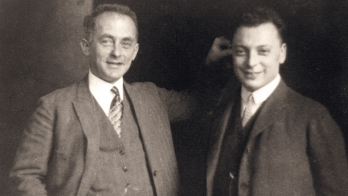By Leon N Cooper and Dmitri Feldman (eds.)
World Scientific
Hardback: £84 $135 Paperback: £40 $65

More than 50 years after John Bardeen, Leon Cooper and Robert Schrieffer – BCS – published their now famous theory of superconductivity, and 100 years since the discovery of superconductivity, the key concepts have become the basis of a vast and ever-increasing field of investigation, both theoretical and experimental.
This exceptionally well written and edited book celebrates and reviews the state of BCS theory and experiment. The many chapters on the history and early experiments (written by Bardeen, Cooper, and Schrieffer, as well as others) are all very clear and readily accessible to a high-energy physicist, despite containing a wealth of detail. The content continues well beyond the usual applications of BCS theory and there are extensive discussions of extensions of BCS, especially in the light of attempts to understand the new high Tc superconductors.
Experimentalists will especially enjoy the chapter by John Clarke on “SQUIDS: Then and Now”, which contains a beautiful discussion of the early development of the superconducting quantum interference device (SQUID), including some really makeshift laboratory set-ups. I particularly enjoyed his description of trying to get a thin, mechanically stable insulating film for a Josephson junction and his colleague Paul Wraight saying: “How about a blob of solder on a piece of niobium wire? Solder is a superconductor and you keep telling me that niobium has a surface oxide layer.” Remarkably this simple idea worked, with several junctions formed on the crude device. Brian Pippard quipped that it looked as though a slug had crawled through the window overnight and died, and so the term SLUG came into use for what was dubbed a “superconducting low-inductance undulatory galvanometer”. The chapter goes on to cover applications including magnetocardiography, magnetoencephalography, precision gyroscopes, geophysics, qubits, and searches for galaxy clustering and axions.
There is plenty in this book for the particle physicist: Gordon Baym covers BCS theory for atomic nuclei, neutron stars and quark matter; Yiochiro Nambu discusses mass gaps and symmetry breaking; Frank Wilczek writes on BCS theory in QCD at high densities and gives a particularly nice discussion of colour-flavour locking, as well as abelian and nonabelian anyons. In the final chapter Steven Weinberg gives a personal overview “From BCS to the LHC”.
All 23 chapters are by outstanding physicists (including many Nobel prize-winners) and all were fascinating to read. I would highly recommend this book to anyone and everyone as a wonderful review of a powerful unifying concept that covers an enormous range of phenomena.







